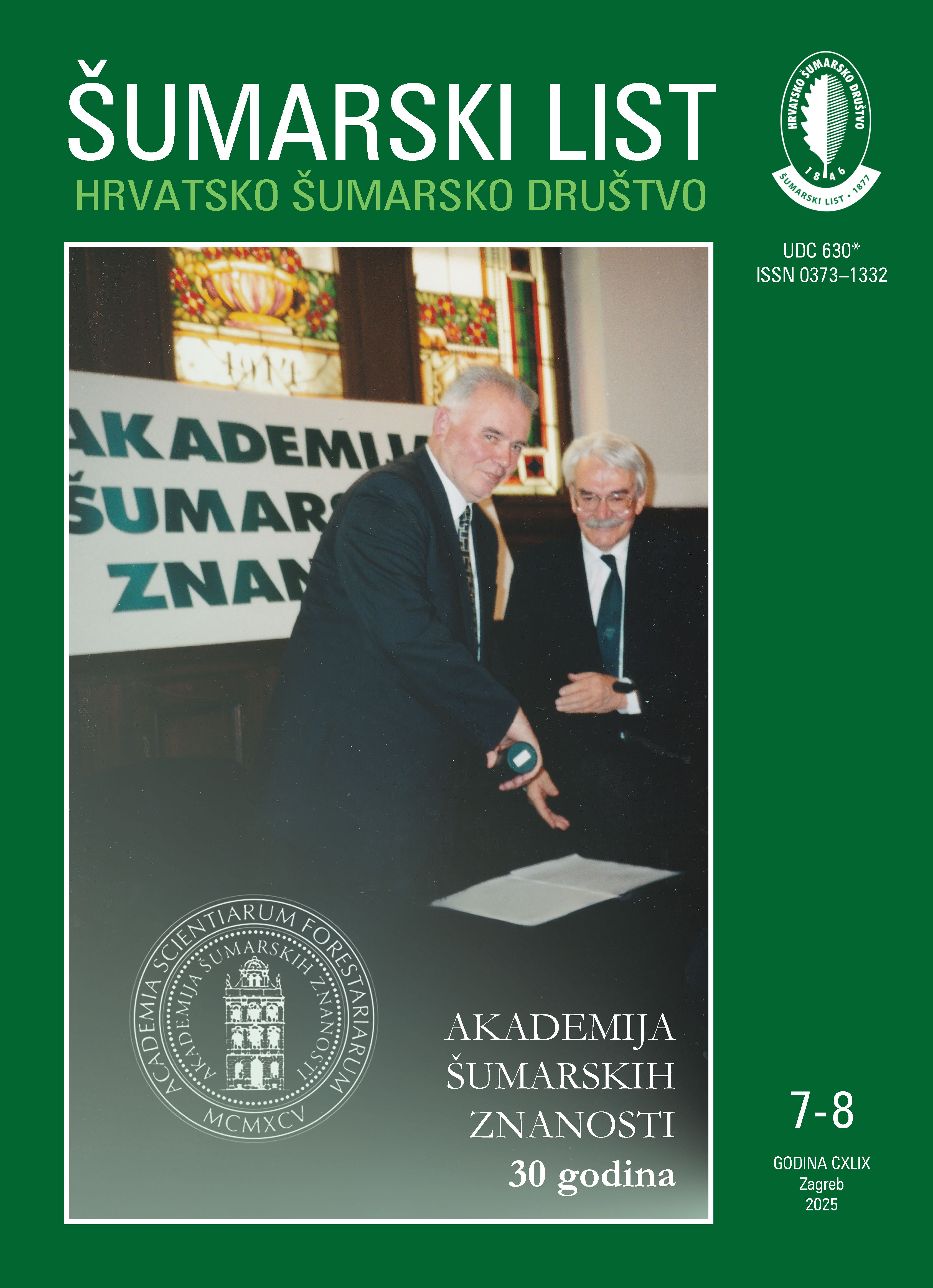Impact of drought on photosynthetic pigments in leaves of common beech and sessile oak, as well as on return calibration of chlorophyll meter MC-100
Keywords:
Chlorophyll meter, chlorophyll index, chlorophylls, carotenoids, Fagus sylvatica, Quercus petraeaAbstract
The goals of this study were to investigate the effects of species and drought on the concentration of photosynthetic pigments (chlorophyll and carotenoids) and their reciprocal ratios in the leaves of common beech and sessile oak. Additionally, the study aimed to assess how drought influences the accuracy of non-destructive estimates of total chlorophyll concentration using a portable optical chlorophyll meter (MC-100). The research was conducted on natural saplings of common beech and sessile oak, which were regularly watered during the 2022 growing season and exposed to drought during the 2023 growing season. Leaves were collected from these saplings in both years, and the chlorophyll index was measured in situ using the chlorophyll meter. The collected leaves were then analyzed in the laboratory to determine their morphological traits and the concentration of photosynthetic pigments, specifically chlorophyll a, chlorophyll b, total chlorophylls (which are crucial for electron and/or energy transfer within photosystems I and II), and carotenoids (which primarily protect the photosynthetic apparatus from photooxidative damage). Given that common beech exhibits more mesophilic traits while sessile oak shows more xerophytic traits, it was hypothesized that drought would have a more pronounced negative effect on the concentration of photosynthetic pigments in common beech compared to sessile oak leaves.
The results of factorial ANOVA and descriptive statistics indicated that drought led to a decrease in chlorophyll concentration and an increase in carotenoid concentration in the leaves of both species. However, during the dry year of 2023, the increase in carotenoid concentration was more pronounced in common beech compared to sessile oak, while chlorophyll concentrations and the reciprocal ratios of chlorophyll to carotenoid concentrations were similar in the leaves of both species. This suggests that enhanced carotenoid production during dry periods may help common beech mitigate photooxidative damage to chloroplasts and/or counteract a significant decrease in chlorophyll concentration. Consequently, it is possible that common beech maintains its competitiveness relative to the more drought-resistant sessile oak due to its more efficient carotenoid production during drought.
The results of ANCOVA and regression analysis revealed that the year or drought did not significantly affect the parameters of the calibration equations describing the relationship between the chlorophyll index and total chlorophyll concentration in the leaves of common beech and sessile oak. This implies that the chlorophyll meter MC-100, when used with appropriate calibration equations, is a reliable tool for estimating total chlorophyll concentration in the leaves of both species, irrespective of drought conditions.
The results from factorial ANOVA and descriptive statistics indicated that drought led to a decrease in chlorophyll concentration and an increase in carotenoid concentration in the leaves of both species. However, during the dry year of 2023, the increase in carotenoid concentration was more pronounced in common beech compared to sessile oak, while chlorophyll concentrations and the reciprocal ratios of chlorophyll to carotenoid concentrations were similar in the leaves of both species. This suggests that enhanced carotenoid production during dry periods may help common beech mitigate photooxidative damage to chloroplasts and/or counteract a significant decrease in chlorophyll concentration. Consequently, it is possible that common beech maintains its competitiveness relative to the more drought-resistant sessile oak due to its more efficient carotenoid production during drought.
Results from ANCOVA and regression analysis revealed that the year or drought did not significantly affect the parameters of the calibration equations describing the relationship between the chlorophyll index and total chlorophyll concentration in the leaves of common beech and sessile oak. This implies that the chlorophyll meter MC-100, when used with appropriate calibration equations, is a reliable tool for estimating total chlorophyll concentration in the leaves of both species, irrespective of drought conditions.
Downloads
Published
License
Copyright (c) 2025 Krunoslav Sever, Filip Milaković, Antonia Vukmirović

This work is licensed under a Creative Commons Attribution-NonCommercial 4.0 International License.


